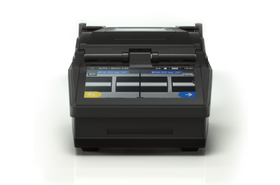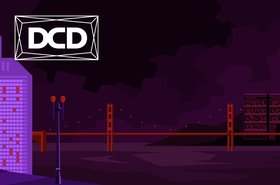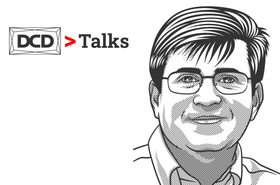Have you ever experienced a life crisis? Perhaps yours was a mid-life crisis, an identity crisis, or maybe you are in the midst of your quarter-life crisis like myself.
What all ‘crises’ have in common, is they are built upon the tenuous scaffolding of dramatic changes and developments, shortly followed by uncertainty and crippling anxiety. I have come thus far, but what lies ahead? How can I make it meaningful, how can it be better?
It seems to me that the data center industry is currently experiencing a crisis. Demand is rising, the supply chain is suffering, and the workforce, frankly, looking a little on the thin side.
Of course, this hasn’t gone unnoticed by those for whom it is their everyday worked-experience. But is there anything we can do to soothe those pangs of anxiety?
We sat down with Sumitomo Electric Lightwave’s Greg Pierce in our latest DCD>Talk to discuss the current state of the industry, and what he sees as potential solutions.
“Things are moving very fast, so the pressure is that much greater. Then, of course, we were dealing with supply chain issues, and all these things tied to Covid,” said Pierce, of the current state of things.
“I think what you have to do, is have a lot of foresight. How are you going to get caught up if you're behind at the time? How much forward-looking can you do? How much forward work can you do? How can you still be a good steward of the company's money, but make sure that you're managing the supply chain such that you're not going to have out-of-stock situations?”
But the fact is, things are constantly changing, and doing so in a way that follows the law of accelerating returns.
“We live in a very global environment. We work in the communications world, and so you have to look globally, you have to look to the people around you, and the companies around you to keep you in a good position in the market.
“Our world is very quickly evolving. The need for speed and quality of data transmission just continues to get greater and greater, and it's inevitable that it’s going to continue.
“Take the input your customers are giving you, and put yourself in their position. Think of what is driving them and what they need, and then try to stay on top of that, while also staying a step ahead of it.”
The reality is that what is enough today, won’t necessarily be enough tomorrow. Every decision made needs to project to the future, and this is only going to get more important.
“We know that our customers are under tremendous pressure. Think of our networks today – in some ways they’re called utilities, but they really are utilities just like the power company and the water companies. We need our broadband infrastructure. Once you get used to it, it is a very primary utility,” explains Pierce.
“Think about autonomous driving or artificial intelligence and all these things coming at us more and more. They're only going to make that part of our lives, that part of our infrastructure, that much more critical.
“You have to think about the pressures on your customers from that standpoint. Think about how I can design products. How can I sell products that are going to make it easier for them to be more reliable? To be changed out if needed, as there are advances in the technology? How do we prepare these things for the future?”
While individual companies should be asking these questions, the industry as a whole needs to focus on tackling the obstacles. It’s all very well designing ‘better’ products, but with the shortage of raw materials, and lack of skilled workers, these decisions will reach their limits.
Ultimately, as with any life crisis, there is no real solution. We cannot see into the future with clarity, all we can do is take every small obstacle as it comes, gradually paving the way toward whatever lies on the horizon.
“The one thing I am quite confident about being inevitable, is change. I don't know that flexibility is inevitable, or that our ability to adapt to that inevitable is. But change is inevitable.”
More from Sumitomo Electric Lightwave
-

-

Sponsored Revolution on Cable Street
-

Episode Tech Showcase: Cabling


